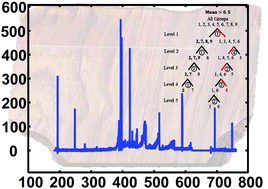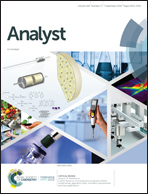Assessing utility of handheld laser induced breakdown spectroscopy as a means of Dalbergia speciation†
Abstract
Many species of Dalbergia are prized hardwoods, generally referred to as ‘Rosewood,’ and used in high-end products due to their distinctive hue and scent. Despite more than 58 species of Dalbergia being listed as endangered in Appendix 1 of The Convention on International Trade in Endangered Species of Fauna and Flora (CITES), the illegal logging and trade of this timber is ongoing. In this work, a handheld laser induced breakdown spectrometer (LIBS) was used to analyze seven Dalbergia species and two other exotic hardwood species to evaluate the ability of handheld LIBS for rapid classification of Dalbergia in the field. The KNN model of the classification presented 80% to 90% sensitivity for discriminating between Dalbergia species in the training set. PLS-DA models were based on a binary decision tree structure. Cumulatively, the PLS-DA decision tree model showed greater than 97% sensitivity and 99% selectivity for prediction of Dalbergia species included in the training set. The data presented in the following study are promising for the use of handheld LIBS devices and both KNN and PLS-DA models for applications in customs screenings at the port of entry of hard woods, among others.



 Please wait while we load your content...
Please wait while we load your content...
